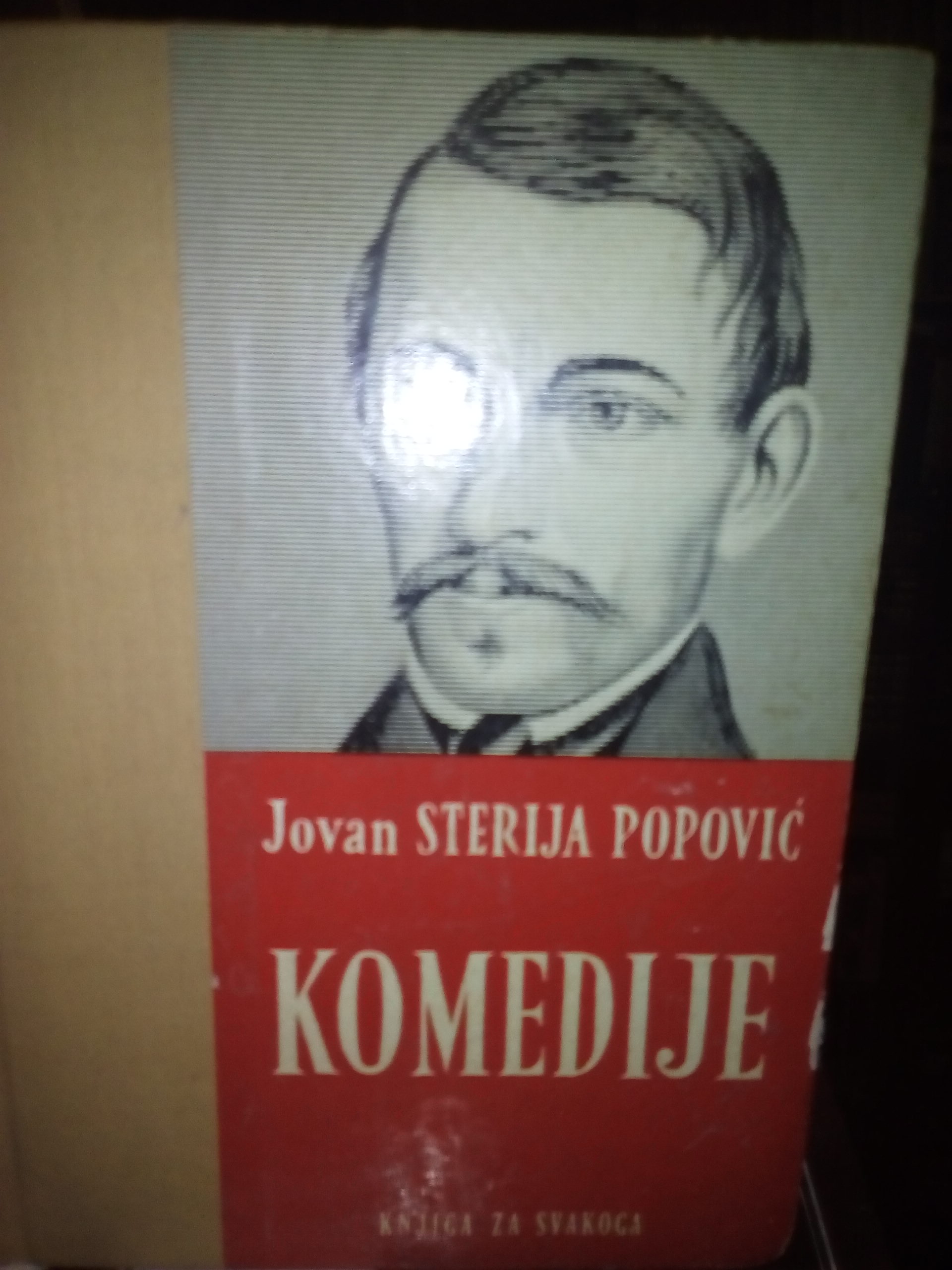
In 1841, 18 some less important Sterija's comedies were also performed: Ženidba i udadba, Simpatije i antipatije, Volšebni magarac, Džandrljiv muž, Sudbina jednog razuma, and Prevara za prevaru. His comedies Laža i Paralaža (1830), Pokondirena tikva (1830), Tvrdica (1837) and Zla žena (1838), have brought him the appreciation of his contemporaries and the reputation of being "Serbian Molière". Sterija eternalized his home-town with the characters of Kir Janja, Fema Ružić and others. The first period of Sterija's writing of comedies falls on the time of his life in Vršac, between 18. His comedian talent has created strong and great literary works, which are even greater because it was, in fact, Sterija who paved the way to the Serbian comedy in general. Sterija showed a real artistic value as the writer of comedies. Miošić's poems about Skanderbeg from his most important work A Pleasant Discourse of the Slavic People were basis for Život i viteška voevanja slavnog kneza epirskog Đorđa Kastriota Skenderbega written by Sterija Popović in 1828. The first Sterija's tragedy Svetislav i Mileva is worth mentioning, then Miloš Obilić ili Padnuće serbskog carstva, Nesrećno supružestvo ili Naod Simeon, Skenderbeg and Lahan. The Belgrade theatre Theater on Đumruk opened with his tragedy Smrt Stefana Dečanskog in 1841. Following the example of the great French and German tragedians, he described events from the history of the Serbian people. With good reason he has been given the name "the father of Serbian drama".

Jovan Sterija Popović is undoubtedly one of the most significant figures of Serbian literature. He is buried at the Orthodox cemetery in Vršac. At the beginning of the same year (1848) he decided to tender his resignation and return to Vršac (1848-9 part of Serbian Vojvodina, 1849–60 Serbia and Temeschwar), where he lived till his death in 1856, deeply disappointed with people and life in general. His continued disagreement with the leading politicians of the day and ill health would soon force him to withdraw from public life. He remained in this position until 1848, working on organizing the school system and education in Serbia. He was appointed head of the Ministry of Education by the constitutional government in 1842. He continued to write dramas, which he also organized, staged, and directed. He was instrumental in founding the Serbian Academy of Sciences and the National Museum. In the same year, he moved to Belgrade, where he would spend eight years, teaching at what was then the most advanced school in Serbia, Grande École ( Belgrade Higher School, future University). In 1840 he went to Kragujevac to study at the pedagogic school of natural law. He began to write historical dramas but soon switched to comedy. Like many other intellectuals of Vojvodina, driven by patriotic feelings, he decided to work in the Principality of Serbia. After he finished his studies (1830), he worked as a professor, and from 1835, when he passed his bar examination, he returned to his hometown where he first taught Latin, then opened his law practice. Popović attended grammar schools in Vršac, Karlowitz (Sremski Karlovci), Temeschwar (Timișoara) and Ofenpesth (Budapest). His maternal grandfather was known painter and poet Nikola Nešković, of whom he would later write a biography. The ethnicity of Popović's father and of Popović himself is disputed, with some saying that they were of Aromanian descent while others saying they were of Greek one.

His father Sterija (meaning "star"), after whom he was nicknamed, was a merchant. Popović was born in Werschetz (Vršac), in the Temesch County of Habsburg Kingdom of Hungary (now Serbia).


 0 kommentar(er)
0 kommentar(er)
